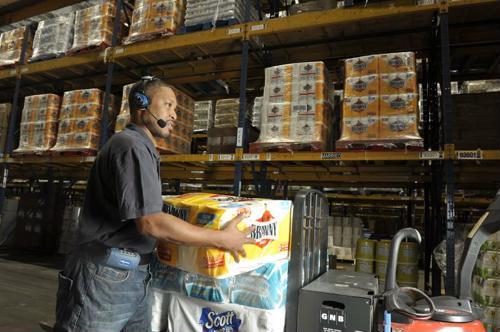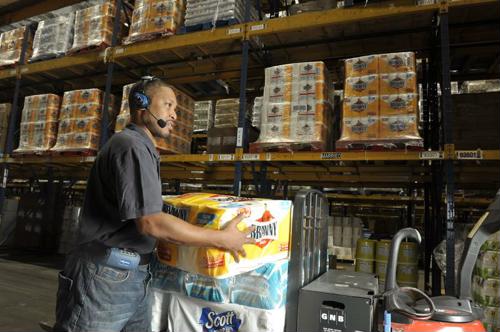
Many companies have begun to explore how speech recognition software in their warehouse or distribution center can streamline operations. Instead of having to key in or scan information using a mobile device, employees wear a small, wireless computer with a headset and microphone and verbally relay commands and information to their device, which then communicates with the central warehouse management software.
This allows warehouse staff to use voice commands to complete tasks, which keeps their hands free so they remain focused on their work in order to ensure a more streamlined data collection process. This technology can be used in warehouses in a variety of ways:
- Order picking and selection
- Receiving
- Replenishment
- Put-away
- Outbound loading
- Cycle-counting and inventory
- Auditing
- Back stocking
“Voice improves accuracy and efficiency in the warehouse, resulting in higher productivity,” explained RFgen. “[Our partner] Vocollect has studied the results achieved by their customers using voice for multiple workflows in the warehouse. There are significant improvements in productivity, cost savings, and a reduction in the time needed to train employees.”
Which kind of speech recognition software should be used?
Even if distribution center executives decide that it’s time to implement speech recognition software, they can get hung up on the technical aspects of different products. It’s important to understand the two major kinds of software: speaker-dependent and speaker-independent.
Speaker-dependent systems require each user to “train” the system for his or her individual speech pattern, dialect or language. Accurate voice training typically takes only a few minutes, with the system able to calibrate so it can recognize individual speech patterns. This allows the system to be more accurate and robust in an industrial environment with a wide range of accents, dialects, languages and extraneous noise.
Speaker-independent solutions try to match the user’s voice to generic voice patterns. This means that speaker-independent systems have an increased likelihood of errors and voice commands failing to be understood by the system, especially if the user has an accent or is not a native English speaker. These systems also have more trouble filtering out environmental noise, which is problematic in a busy warehouse setting.
What is voice picking?
When a speaker-dependent voice picking system is successfully implemented in a distribution center, it can have immediate results that benefit productivity and efficiency. Vocollect research has found the following to occur after adoption:
- 20 percent increase in warehouse productivity
- 99.99 percent order accuracy
- 50 percent reduction in training time
- 52 percent improvement in replenishment rate (pallet/hour)
Order picking is the most common use for voice recognition software because the technology is much more accurate than legacy systems. By eliminating paper picking labels, warehouses can realize significant cost savings just through reduced paper usage. The system also enables real-time stock updating, which can trigger activities that, for example, optimize the use of forklift trucks so that orders are picked up promptly and wait times are reduced.
Over time, this software can also help warehouses perform cycle counting to make stock-checking processes much more efficient. In addition, workplace safety improves because workers are more aware of their surroundings. Overall, these improvements result in less time spent investigating stock discrepancies and better management of the warehouse.






